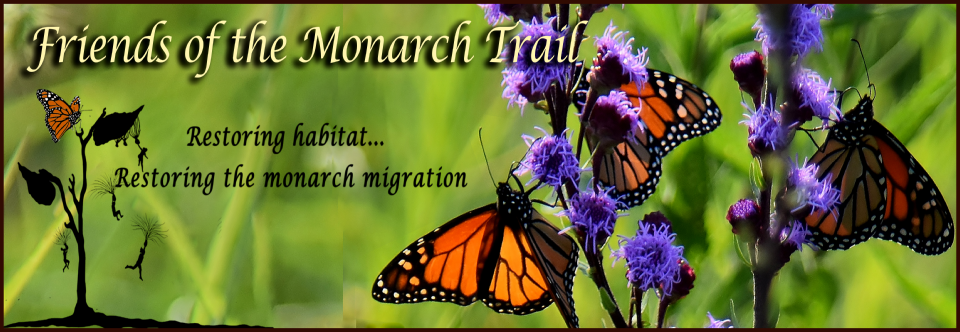


The Numbers Game
The odds monarch butterflies face are daunting, but there is reason for hope
What does one acre look like? How big is it in your mind?
Well, it’s easy to visualize if you’re a fan of the Green Bay Packers, Bucky Badger or any other football team. The playing area of a football field, not counting the end zones, is just a bit over one acre. If you do add in the end zones and the sideline bench areas, you have about an acre and a half.
What’s this got to do with monarch butterflies?
In the winter of 2013-
The largest area occupied by monarchs in Mexico since such measures have been taken was about 21 hectares, or just more than 50 acres. That was 20 years before. It still may not sound like much space to contain all of our eastern American migratory monarchs, but keep in mind that they roost very densely, and so the actual number of individual monarchs in that roosting was estimated at about 1 billion. The 2013-
Either way, the population numbers are alarming. And so are the habitat numbers, which too many of us seem to correspond.
Since the monarch roosting sites in Mexico were discovered by biologists in 1976, the massive alteration of the Midwestern American landscape begun by European settlers a century and a half before has continued apace. Just since 2006, on average, about 250,000 acres of pasture and meadow has been converted each year to row crops, principally corn and soybeans.
Here are four more related numbers: Common milkweed reigned as the No. 1 weed in agricultural fields and pastures for the first two centuries of agriculture in the Midwest. In “overage,” or the total weight of any uncultivated plant species in a given cultivated space, nothing topped milkweed. It was the boss weed, more prolific and persistent than any other.
Second number: According to tagging studies, 50 percent of all monarchs that reach Mexico come from the Upper Midwest states, once known as the Prairie States, now known as “the Corn Belt.” This former prairie province was and remains the primary breeding ground for eastern U.S. migratory monarchs.
Third number: According to estimates based on 40 years of research, 90 percent of all eastern American monarchs were reared on common milkweed growing on agricultural lands, whether in pastures or cultivated fields.
Fourth number: Since their widespread introduction early in this century, herbicide-
The combination of wholesale conversion of pasture and grassland to cropland, and the broad-
Does this number, 90 percent, begin to sound uncomfortably familiar?
The unfortunate truth is that industrial-
So, the numbers suggest that the odds are significantly against the recovery of historical monarch numbers in both the short and long terms. And if we look only at those numbers, we may have to admit that, while the migratory population of eastern U.S. monarchs may not disappear altogether, it may never again approach those historic peaks.
But there are other numbers worth considering – such as the number 1 million. That’s the number of years most researchers believe that monarchs and North American milkweeds have been co-
Surely, during the dynamic and often catastrophic course of that 1 million years, when the Earth’s climate swung radically back and forth, through periods of extreme cold and drought, there must have been times when monarch numbers crashed. Just as surely, there have been other times when their numbers soared during mild interglacial periods.
Those of us who have been around awhile have been privileged to enjoy what may have been a peak period in the natural history of the monarch butterfly – a time when a mild climate, combined with a riotous proliferation of common milkweed across the landscape, produced ideal conditions for monarch reproduction. But we now face the sad fact that this Golden Age of the monarch has precipitously ended, and it is not due to some natural cause – not periodic extreme cold or drought – rather, it is entirely our fault.
Never before did the monarch need the help of another animal species to recover from a population crash. But never before was there another animal species able to consciously offer that assistance. We brought on the crisis, and only we can resolve it, either for or against the monarch.
The hope, then, lies both in the remarkable and proven resilience of the monarch and in the extraordinary ability and will of humankind to alter the course of natural history. What we have done, we can also undo. We have converted hundreds of millions of acres of prairie into plowed fields. We have the ability to convert hundreds of millions of acres of roadsides and rights-
The numbers game goes on. If 100 people were each to plant a 400-
And if, in the meantime, every Midwestern state commits resources to roadside prairie restoration, utility right-
It is all within our ability to do and requires only the will. Because if there is one thing that humankind has proved, it is that anything we really set our minds to do, for good or for ill, will most surely get done.